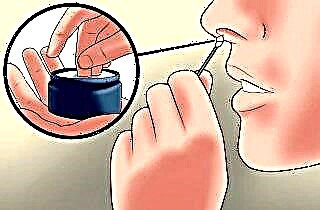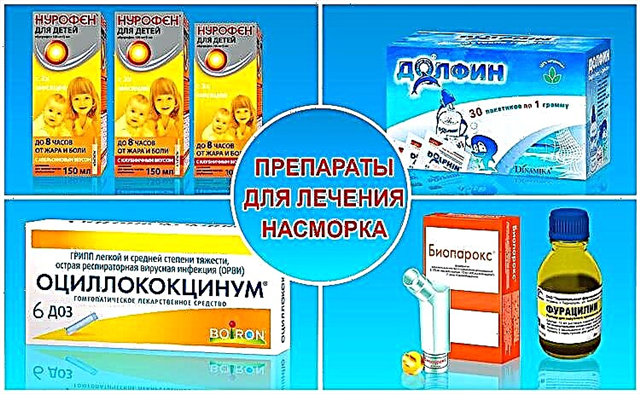Adenoids are a typical children's problem, which is associated with the anatomical features of their structure. But it is not always possible to just wait for the child to outgrow if they become inflamed too often. Surgical removal is the other extreme. The adenoids have a rather important protective function and, having lost them, you can create another instead of one problem. Of course, surgery is easier than treating adenoids in a child. But this is just the case when you need to be patient.
Anatomical features
 The adenoids are the pharyngeal tonsil, which is invisible during external examination of the throat, which is located deep in the nasopharynx. Basically, it consists of lymphoid tissue and performs a very important function - it warms and partly filters the air that enters the throat when breathing through the nose. So the respiratory organs are additionally protected from hypothermia and the penetration of pathogenic microorganisms.
The adenoids are the pharyngeal tonsil, which is invisible during external examination of the throat, which is located deep in the nasopharynx. Basically, it consists of lymphoid tissue and performs a very important function - it warms and partly filters the air that enters the throat when breathing through the nose. So the respiratory organs are additionally protected from hypothermia and the penetration of pathogenic microorganisms.
For various reasons, the adenoids can become inflamed and grow in size. Thus, the gap separating the larynx from the nasal passages narrows and breathing through the nose becomes difficult. There are three stages of proliferation of the adenoids: in the first, the opening is blocked only by a third; on the second and third by 2/3 or almost completely.
Due to severe difficulty in breathing, the child is forced to inhale through the mouth. This means that the inhaled air does not undergo cleaning from the dust and dirt in it (which adhere to the villi lining the nasal mucosa), and also remains cold, contributing to the development of respiratory and broncho-pulmonary diseases. But this is only part of the problem.
If the pathological proliferation of the adenoids is accompanied by their chronic inflammation (and this is what happens most often), then this negatively affects the development of the entire child's body and can lead to:
- improper bite formation;
- inflammation of the meninges;
- violation of articulation, poor diction;
- slowing down the development of the speech apparatus;
- pathological change in the blood count;
- chronic diseases of internal organs.
Interestingly, inflammation of the adenoids is most often observed in children 8-10 years old. Perhaps this is due to the fact that by this age their lymphoid tissue begins to actively produce protective antibodies that destroy microbes entering the body. In children with weak immunity, adenoids simply cannot cope with the load and begin to grow actively.
But after 12 years, they begin to gradually decrease in size. And by about 17 years, when the complete formation of the body's immune system ends, in most people they completely atrophy. Therefore, for adults, the diagnosis of "adenoiditis" is irrelevant.
The main symptoms
Children with greatly enlarged adenoids can be visually identified even by a non-specialist. Unfortunately, this problem negatively affects not only the health of the child, but also his appearance. The lower jaw in such children is usually enlarged and protrudes slightly forward, the mouth is slightly open, the nose seems small and is often covered with ugly crusts at the nostrils.
 At an earlier stage, other typical symptoms appear:
At an earlier stage, other typical symptoms appear:
- heavy snoring or snoring during sleep;
- constantly having difficulty breathing through the nose;
- frequent respiratory illnesses;
- persistent decrease in immunity;
- hearing impairment;
- nasal voice, impaired diction;
- inability to pronounce individual sounds;
- frequent otitis media, tonsillitis, sinusitis.
With acute inflammation of the adenoids, the temperature rises, there is swelling of the larynx, pain when swallowing, coughing. Chronic inflammation is characterized by a sore throat, general weakness, increased fatigue, and poor sleep. Young children are often naughty for no apparent reason.
Since it is impossible to examine the adenoids through the mouth on your own, you should not even try to cope with the disease - you must immediately go to the doctor.
Diagnostics
Diagnosis of proliferation and inflammation of the adenoids, like any other, begins with an initial examination. The otolaryngologist performs it using a special mirror on a thin handle, which is inserted into the mouth and allows you to examine the condition of the adenoids from all sides, assess the degree of their proliferation and damage to the lymphoid tissue.
To find out the reasons provoking the inflammatory process, a complete blood count, bacterial culture of mucus, and sometimes a biopsy will be required if there is a suspicion of degeneration of the adenoid tissue. According to the results of these studies, it is possible to determine the presence of an inflammatory process, the activity of its course, the causative agent of the disease (if any) and check the sensitivity of pathogenic microorganisms to various antibacterial drugs.
 If necessary, other methods of hardware diagnostics can be applied:
If necessary, other methods of hardware diagnostics can be applied:
- X-ray - will allow you to determine the exact location and depth of growth of the adenoids;
- computed tomography - additionally gives an idea of the density and structure of the adenoids;
- endoscopy is the most informative and convenient method of examination, in which the state of the adenoids and nearby tissues can be studied in detail; the endoscope can be inserted through the nose or mouth.
Endoscopy is often difficult for a very young child, so the doctor has to be content with other methods of examination.
Based on the results obtained, the doctor decides which of the methods to choose for the treatment of adenoids in this case: surgical or conservative. And if earlier operations to remove adenoids were carried out quite often, then recently more and more doctors are trying to preserve them.
Adenotomy
 The operation to remove the adenoids is simple and can even be performed on an outpatient basis under local anesthesia. Moreover, in modern clinics, it is increasingly carried out using laser equipment, which immediately cauterizes blood vessels and capillaries, is practically painless and bloodless. But it is performed strictly for medical reasons, which are:
The operation to remove the adenoids is simple and can even be performed on an outpatient basis under local anesthesia. Moreover, in modern clinics, it is increasingly carried out using laser equipment, which immediately cauterizes blood vessels and capillaries, is practically painless and bloodless. But it is performed strictly for medical reasons, which are:
- long and ineffectual conservative treatment;
- increasing frequency of respiratory diseases of an infectious and non-infectious nature;
- a strong drop in the child's immune defense;
- developing chronic otitis media, hearing impairment;
- catarrhal and purulent sinusitis, chronic inflammation of the paranasal sinuses;
- holding your breath and heavy snoring during sleep.
Before the appointment of the date of the operation, an additional examination is required to make sure that there are no contraindications, which are: systemic blood diseases, oncology, AIDS, bleeding disorders, recent illnesses and operations (a month or less ago), exacerbation of chronic diseases of internal organs.
The rehabilitation period after surgery is up to 14 days, and the active period is up to 48 hours. During the first days after the operation, you should not eat solid food, drink hot or very cold water.
Until the end of the recovery period, active physical activity, all water sports, baths and saunas, being in direct sunlight are excluded. For prophylactic purposes, antibiotics and anti-inflammatory drugs may be prescribed.
After a successful operation, there are practically no complications. They can occur in violation of the doctor's prescriptions for adherence to the postoperative regimen or when an infection gets on the wound surface.In this case, a course of intensive therapy is additionally prescribed to stop the inflammatory process and speed up wound healing.
Conservative treatment
Modern otolaryngologists recommend including all available methods and means in the conservative course of treatment for adenoids: traditional medicine, traditional medicines and physiotherapy procedures. It is such an integrated approach that gives maximum results. At the same time, this method is gentle for children, since natural preparations and herbal decoctions are used for rinsing, inhaling and treating the throat.
 The intensive treatment of adenoids includes:
The intensive treatment of adenoids includes:
- Rinsing the nose. It is better to carry it out with a special syringe. Of course, an older child can draw water into his nose on his own, but if he does it too hard, the liquid can get into the Eustachian tube and provoke otitis media. For washing, it is better to use a solution of sea salt, furacillin, potassium permanganate or decoctions of herbs with anti-inflammatory properties: celandine, St. John's wort, chamomile, eucalyptus. A well-performed procedure is 200 ml of liquid passed through a spout, which will wash away mucus and pathogens from there. Washing is enough 1-2 times a day. But in the morning it is an obligatory ritual, as it is necessary to rid the baby of the mucus accumulated during the night.
- Phytoseeds. It is better to buy herbal teas for children in pharmacies. Herbs for them are collected in ecologically clean areas and undergo radiation control. And the proportions are optimally observed so that they enhance the healing properties of each other. Herbal teas can be used in different ways: for rinsing the nose, gargling, inhalation or drinking. A warm drink moisturizes mucous membranes, relieves irritation and swelling, and helps to reduce adenoids. It is very important for children to observe the concentration of the decoction. Remember that this is not just a brew - in case of an overdose, side effects and even a strong allergic reaction are possible.
- Inhalation. Steam inhalation is a very effective treatment for adenoids. But they are not prescribed for growth of 3 degrees and for children under one year old. A very narrow opening between the nasal passages and the larynx under the influence of steam can be completely blocked due to the strong swelling of the mucous membranes, and the child will have a feeling of suffocation, which can frighten him. Soda solution, herbal decoctions and ready-made medications, which can be bought at pharmacies, are well suited for inhalation. Duration of inhalation is 5-7 minutes. You can do the procedure daily.
 Aromatherapy. The simplest, but very effective method of treatment, which is suitable even for the smallest. Volatile essential oils have the ability to penetrate deep into mucous membranes and promote their rapid healing and recovery. The easiest way is to use an ordinary aroma lamp for the procedure, the container of which is filled with water with 10-15 drops of the selected oil. The most effective are juniper, thuja, fir, eucalyptus, menthol, camphor, pine, cedar. After an aromatherapy session, the room must be well ventilated - an overdose is just as dangerous here as when taking herbs inside. Sessions can be carried out 1-2 times a day for 15-20 minutes. But remember that inhalation and other treatments are not a substitute for them.
Aromatherapy. The simplest, but very effective method of treatment, which is suitable even for the smallest. Volatile essential oils have the ability to penetrate deep into mucous membranes and promote their rapid healing and recovery. The easiest way is to use an ordinary aroma lamp for the procedure, the container of which is filled with water with 10-15 drops of the selected oil. The most effective are juniper, thuja, fir, eucalyptus, menthol, camphor, pine, cedar. After an aromatherapy session, the room must be well ventilated - an overdose is just as dangerous here as when taking herbs inside. Sessions can be carried out 1-2 times a day for 15-20 minutes. But remember that inhalation and other treatments are not a substitute for them.- Physiotherapy. A very effective treatment for adenoids is electrophoresis, in which electrodes containing a drug are inserted into the nasal passages. Thus, the effect is almost directly on the site of inflammation. A quartz tube is also useful - dosed ultraviolet irradiation leads to a decrease in adenoids and kills pathogenic microflora. Laser therapy is also used in modern clinics. Home warming is not recommended for the treatment of adenoids.
- Nasal drops. The first remedy for the treatment of adenoids has long been considered a 2% solution of protargol, which is instilled into the nose. It is an effective antiseptic drug that causes the adenoid tissue to shrink, as if drying it out. The juices of celandine herb and cyclamen tubers have a similar effect. But in no case should you drip aloe into your nose without a doctor's prescription. It is also better to do without vasoconstrictor drugs - they are used only if absolutely necessary. It is useful to use for instillation tinctures of propolis, eucalyptus, cloves, diluted in half with water, a concentrated decoction of oak bark.
 It is very important to adhere to the optimal daily regimen, taking into account the age of the child and provide him with proper nutrition. If adenoiditis is not complicated by respiratory diseases and the child's condition is satisfactory, then walking in the fresh air cannot be ruled out (only in frost or bad weather!). Of course, you will have to refrain from outdoor games on the street, but being in the fresh air will contribute to a speedy recovery.
It is very important to adhere to the optimal daily regimen, taking into account the age of the child and provide him with proper nutrition. If adenoiditis is not complicated by respiratory diseases and the child's condition is satisfactory, then walking in the fresh air cannot be ruled out (only in frost or bad weather!). Of course, you will have to refrain from outdoor games on the street, but being in the fresh air will contribute to a speedy recovery.
Food should be healthy and moderate. Everything that can irritate the child's nasopharynx will have to be excluded from the diet: soda water, juices with citric acid, spices, spices, smoked meats, vinegar, salty and spicy foods, nuts, seeds, crackers, chips and other delicacies from bags. Drink only weak or herbal tea, it is better to replace sugar with honey (if there is no allergy).
Treatment can be lengthy, especially if the adenoids have already grown to stage 2 or 3.
But if conservative therapy gives, albeit a slow, improvement, it is necessary to continue it until a persistent reduction of the adenoids. Remember how important additional protection is for the baby's health, which cannot be replaced by immunomodulators and other modern medicines.

 Aromatherapy. The simplest, but very effective method of treatment, which is suitable even for the smallest. Volatile essential oils have the ability to penetrate deep into mucous membranes and promote their rapid healing and recovery. The easiest way is to use an ordinary aroma lamp for the procedure, the container of which is filled with water with 10-15 drops of the selected oil. The most effective are juniper, thuja, fir, eucalyptus, menthol, camphor, pine, cedar. After an aromatherapy session, the room must be well ventilated - an overdose is just as dangerous here as when taking herbs inside. Sessions can be carried out 1-2 times a day for 15-20 minutes. But remember that inhalation and other treatments are not a substitute for them.
Aromatherapy. The simplest, but very effective method of treatment, which is suitable even for the smallest. Volatile essential oils have the ability to penetrate deep into mucous membranes and promote their rapid healing and recovery. The easiest way is to use an ordinary aroma lamp for the procedure, the container of which is filled with water with 10-15 drops of the selected oil. The most effective are juniper, thuja, fir, eucalyptus, menthol, camphor, pine, cedar. After an aromatherapy session, the room must be well ventilated - an overdose is just as dangerous here as when taking herbs inside. Sessions can be carried out 1-2 times a day for 15-20 minutes. But remember that inhalation and other treatments are not a substitute for them.

